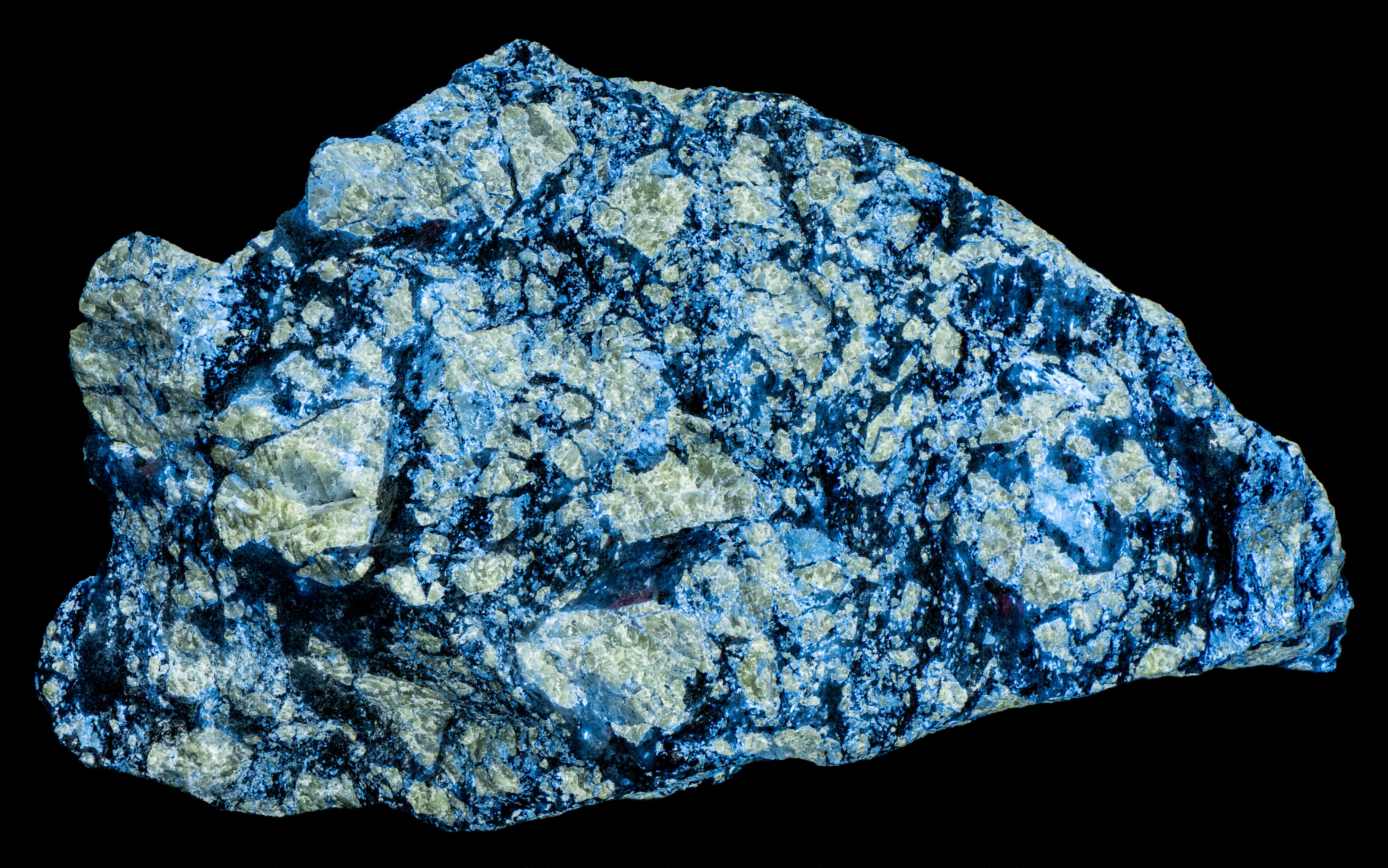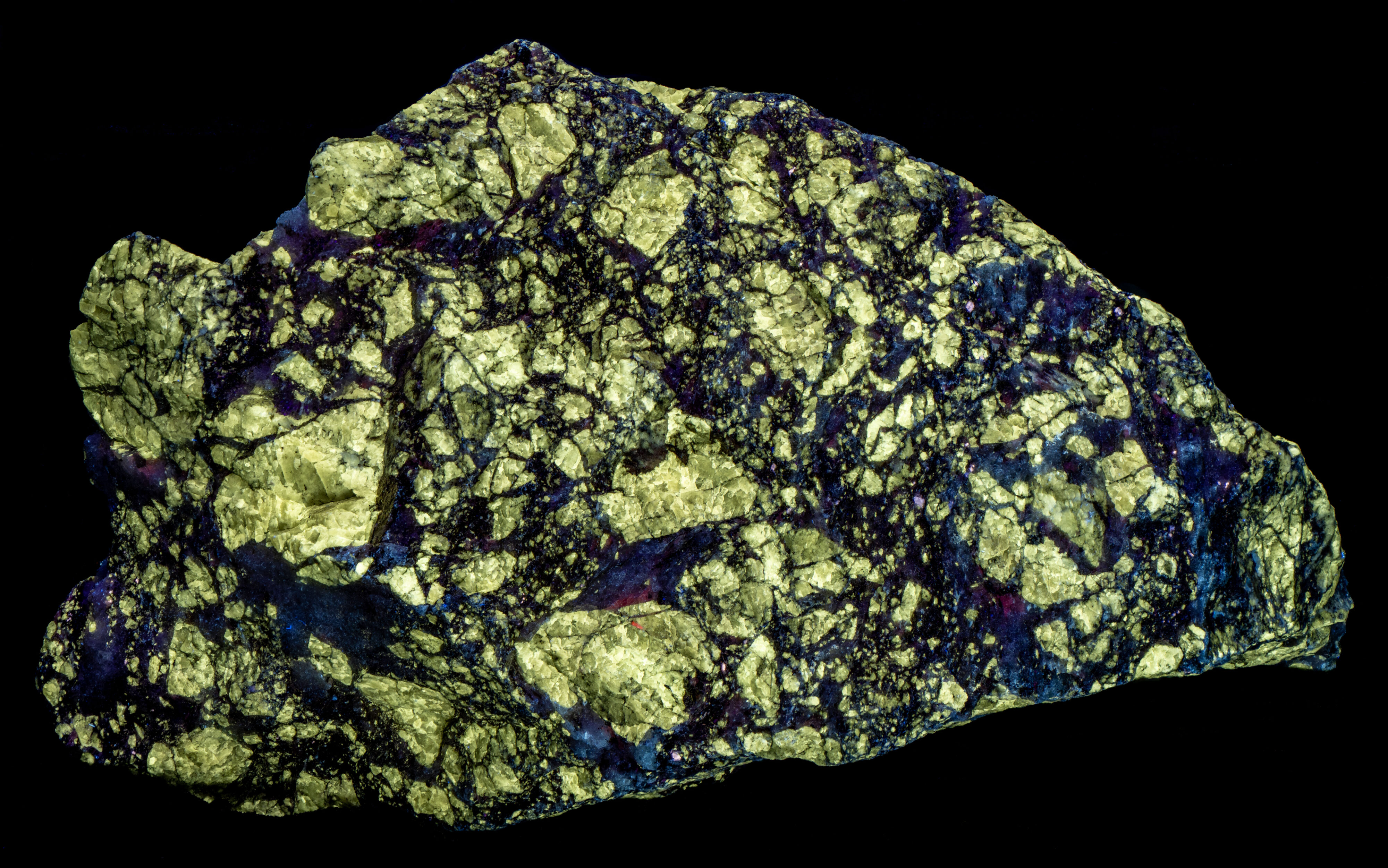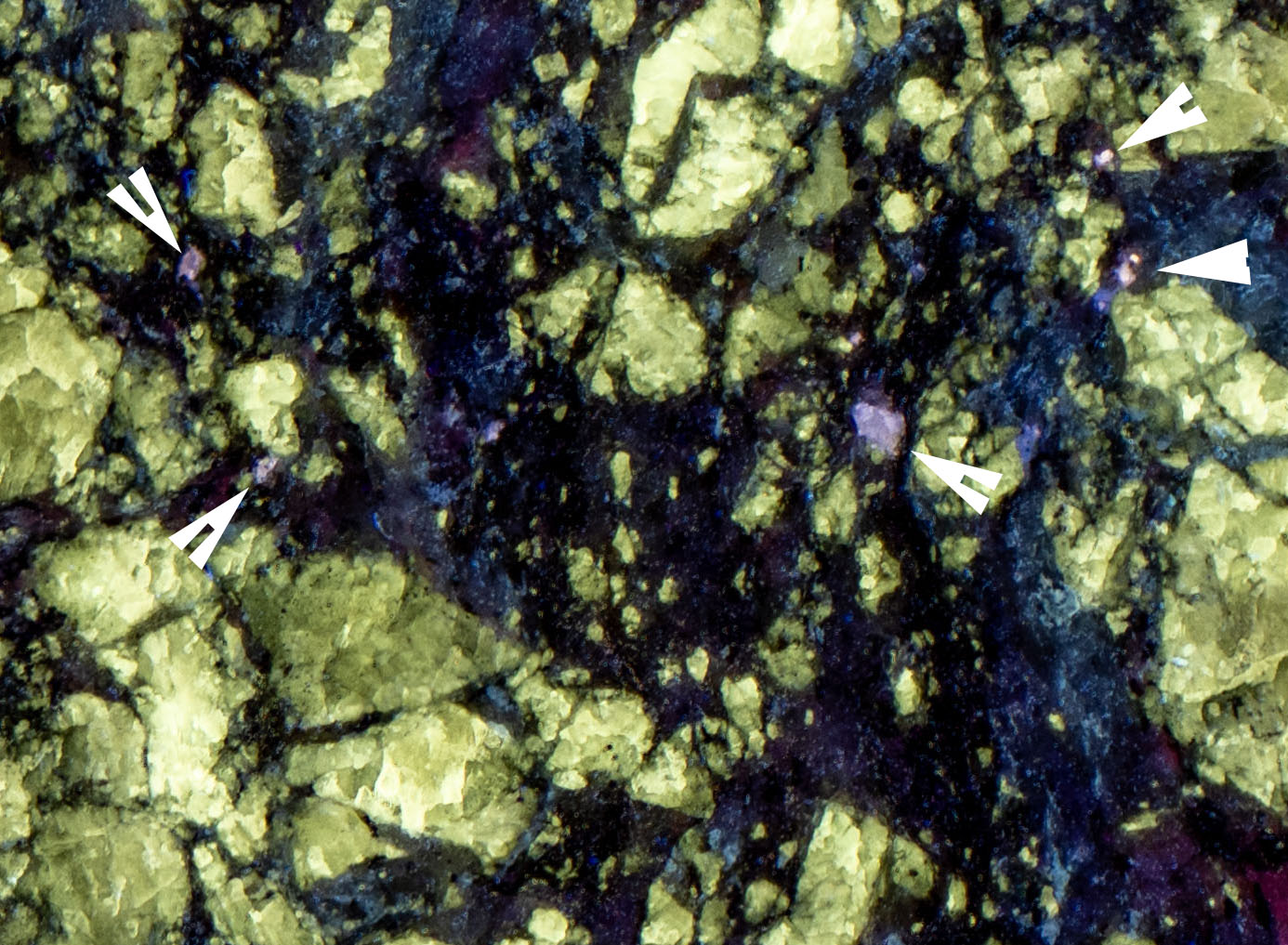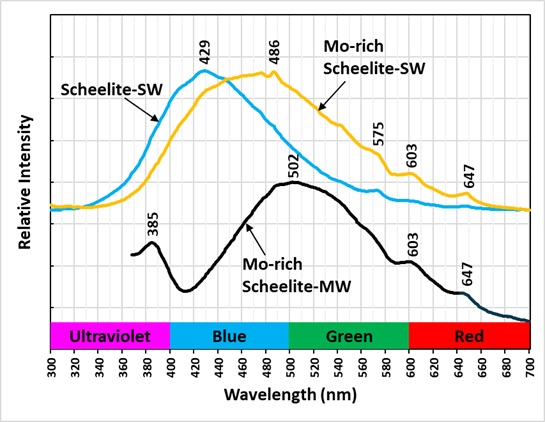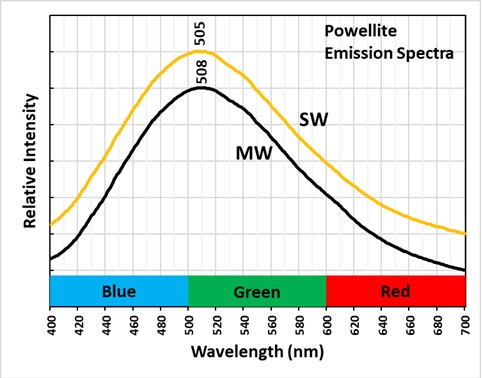Scheelite from Mittersill, Salzburg, Austria
Contributed by: Michael Crawford
Date: Sep 9th, 2025
Locality: Mittersill, Zell am See District, Salzburg, Austria (See on Mindat)
Size: 9 x 15 cm
Description:
Scheelite from the Mittersill scheelite deposit, Salzburg Province, Austria. The scheelite from Mittersill exhibits different fluorescent colors under shortwave UV illumination depending on its molydenum content. Research has shown that the yellow fluorescent scheelite at Mittersill formed first and it contains 0.1 to 1.8 wt% molybdenum substitution for tungsten. Blue, fluorescent scheelite at Mittersill is younger and is molybdenum poor. The yellow fluorescing scheelite is sometimes identified as powellite, but it is really molybdenum rich scheelite.
Only the molybdenum rich scheelite fluoresces under midwave UV light. It has a more saturated yellow color under midwave compared to its shortwave fluorescence. Both types of scheelite are non-fluorescent under longwave light. The specimen also contains a few grains of fluorapatite that fluoresce pink under midwave light.
The shift in the color of scheelite shortwave fluorescence due to molybdenum replacement of tungsten in scheelite has been known for more than 80 years. Scheelite (Ca(WO4)) and powellite (Ca(MoO4)) form a solid solution series where tungsten and molybdenum are readily interchangeable in the crystal structure. A patent for a color chart that relates the scheelite fluorescent color to the percentage of molybdenum replacement was granted to R.S. Cannon in 1944. Cannon determined that SW scheelite fluorescence changed from bluish-white when pure to white at 1.5 molar weight percent molybdenum, and it became yellow at 10 molar weight percent molybdenum. Adding more molybdenum kept the fluorescent color the same as pure powellite (yellow).
The shortwave emission spectrum of the blue, fluorescent scheelite peaks at 429 nm. This fluorescence is caused by the intrinsic tungstate activator. The fluorescence is called “intrinsic” because the activator is part of the mineral’s chemical makeup, rather than an impurity in the mineral. There is also a small sharp peak at 575 nm that is caused by an impurity in the scheelite, an extrinsic activator. The peak may be caused by the rare earth element, dysprosium (Dy3+) replacing calcium.
The molybdate ion is also considered an intrinsic activator. The molybdenum-rich scheelite emission peak is shifted to longer wavelengths due to the molybdate activator. The broad peak is likely caused by a combination of fluorescence from both the tungstate and molybdate ions.
The molybdenum-rich spectrum also contains more sharp peaks compared to the blue scheelite spectrum. The peaks at 486 nm and 575 nm are caused by dysprosium (Dy3+) and the peaks at 603 nm and 647 nm may be caused by samarium (Sm3+). Both of these rare earth impurities replace calcium.
The midwave emission spectrum of the molybdenum-rich scheelite is shifted further towards longer wavelengths (486 nm to 502 nm). The blue scheelite does not fluoresce under midwave light, so the molybdate ion is contributing more to the midwave fluorescence. The spectra of pure powellite have peaks at longer wavelengths compared to this mixed spectrum. The sharp peaks caused by samarium are still present in the midwave spectrum.
Summary of luminescence responses:
Scheelite (Mindat) (RRUFF)
- Fluorescence under Shortwave (255nm LED) UV light: Blue
- Fluorescence under Shortwave (255nm LED) UV light: Yellow
- Fluorescence under Midwave (305nm LED) UV light: Yellow

